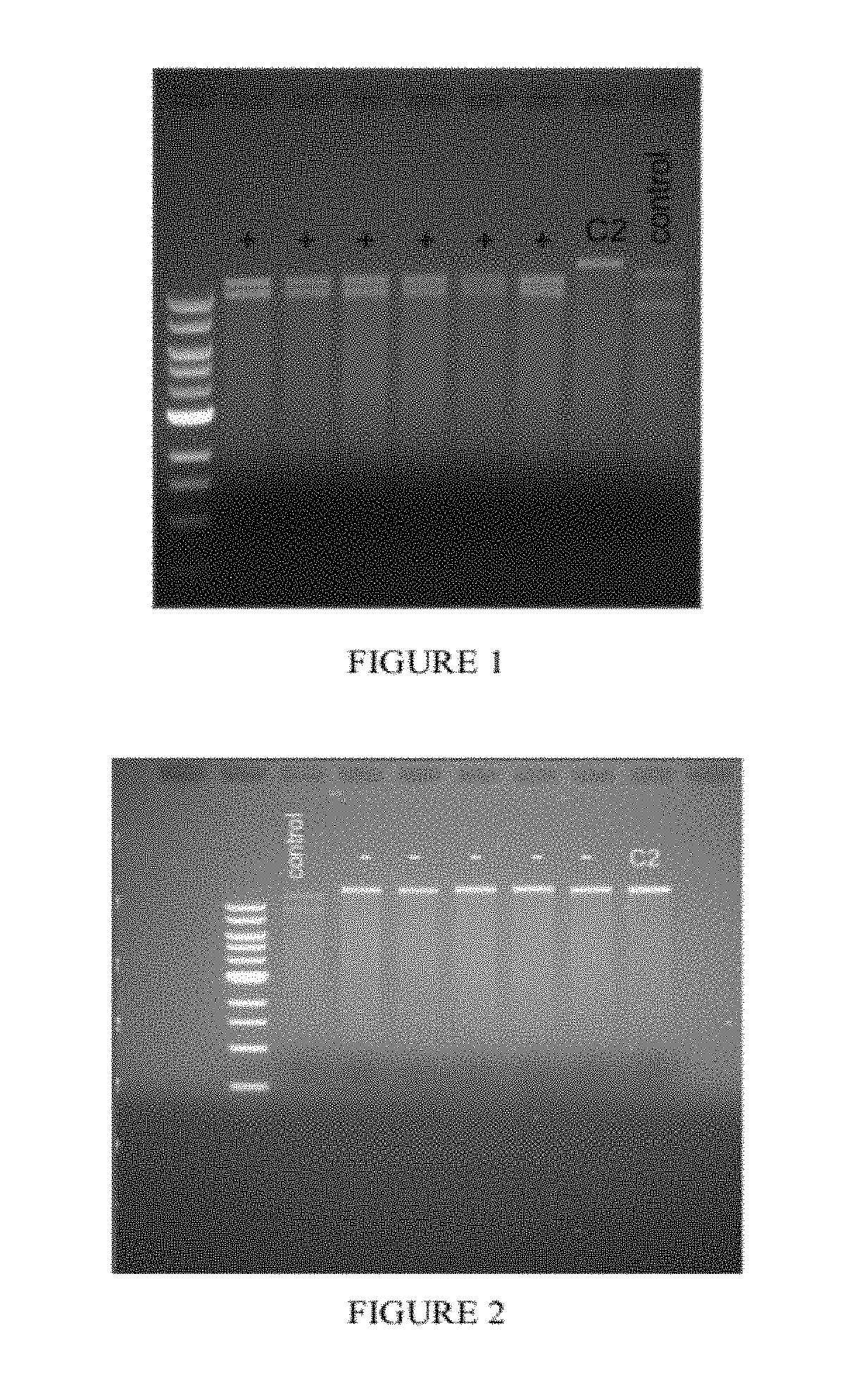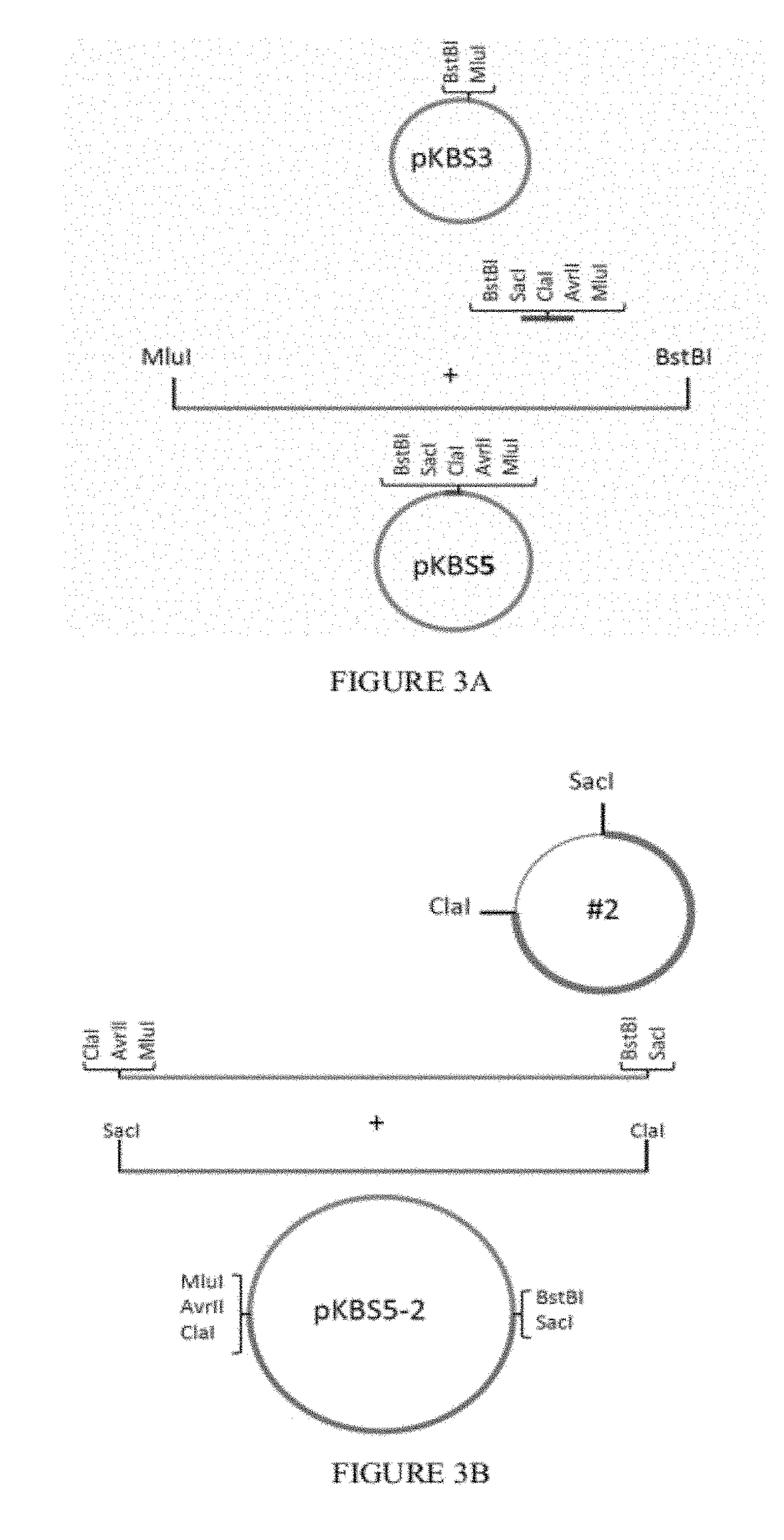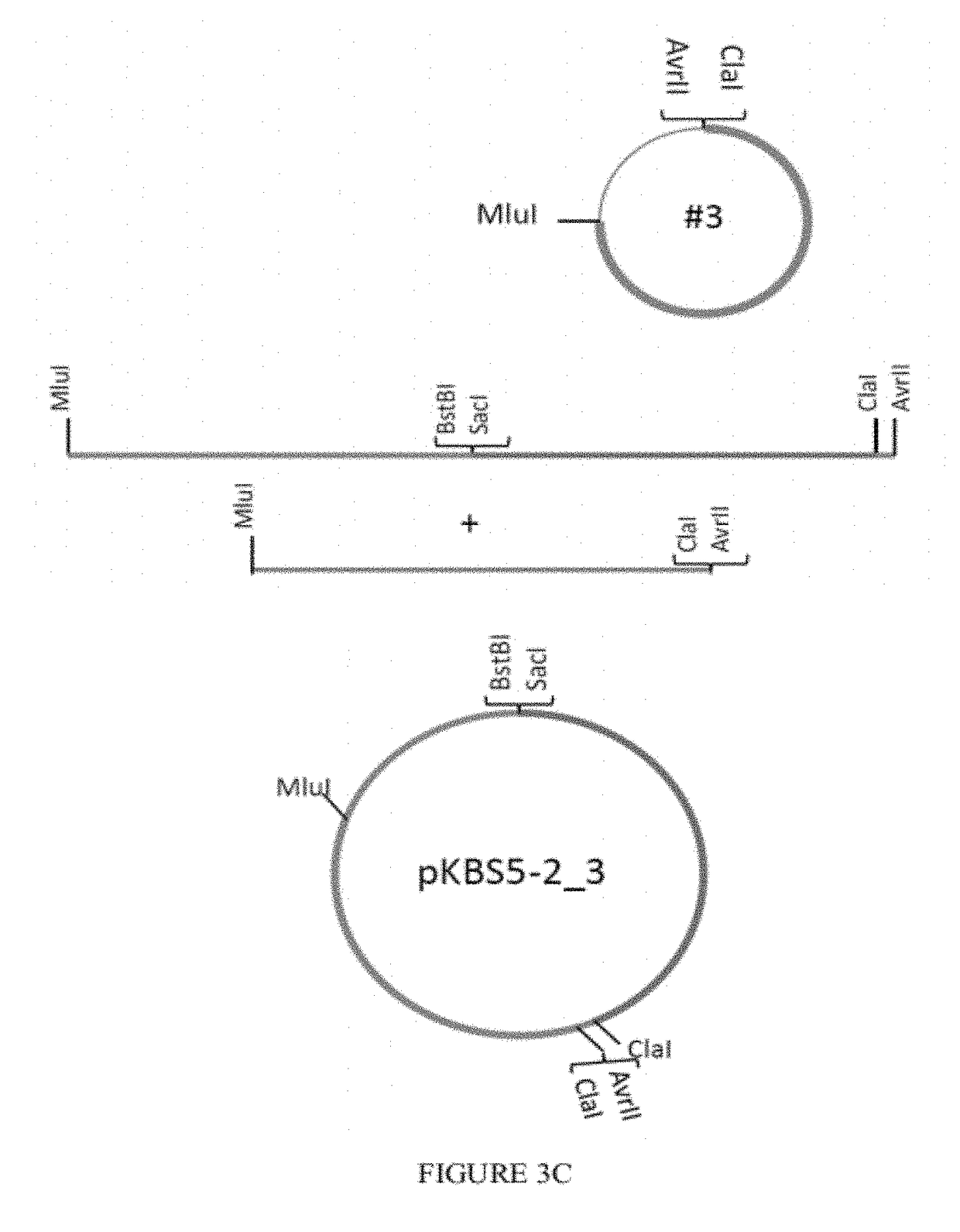Respiratory syncytial virus expression vectors
a technology expression vector, which is applied in the field of respiratory syncytial virus expression vector, can solve the problems of plasmid re-arrangement, plasmid cloning loss, and failure to clone rsv cdna,
- Summary
- Abstract
- Description
- Claims
- Application Information
AI Technical Summary
Benefits of technology
Problems solved by technology
Method used
Image
Examples
example 1
Expression of RSV in Plasmid Designed for Low Copy Number
[0079]Infectious recombinant RSV (rRSV) can be recovered from transfected plasmids. Co-expression of RSV N, P, L, and M2 1 proteins as well as the full-length antigenomic RNA is sufficient for RSV replication. Infectious RSV may be produced from the co-transfection of plasmids encoding N, P, L, and M2-1 proteins and the antigenome under control of the T7 promoter into BHK-21 cells that stably express T7 RNA polymerase (BSR cells). Currently research labs typically use a RSV antigenomic cDNA cloned in the plasmid pBR322 (mid-range copy number, 15-20 copies per E coli). In order to maintain the antigenomic cDNA in this plasmid, the bacteria is grown at 30° C. and low aeration. Nevertheless, plasmid rearrangements and clone loss is frequently experienced.
[0080]A fraction of RSV cDNA containing the attachment glycoprotein (G) and fusion (F) genes of the virus was found to be unclonable in pUC-based plasmids (500-700 plasmid copies...
example 2
RSV Antigenome in BAC Vector (pSynkRSV_line 19 F Construction)
[0084]The RSV-BAC pSynkRSV_line 19 F contains the modified katushka gene (mKate2, fluorescent protein), and restriction sites for more convenient cloning. To build pSynkRSV, three nucleic acid pieces were synthesized by Gene Art, a German company that synthesizes DNA. These three pieces then have to be put together in the bacterial artificial chromosome (BAC). The three pieces are designated pSynkRSV-BstBI_SacI (#1) (SEQ ID NO: 1), pSynkRSV-SacI_ClaI (#2) (SEQ ID NO: 2), and pSynkRSV-ClaI_MluI (#3) (SEQ ID NO: 3). One uses the plasmid pKBS3 as the backbone for constructing pSynkRSV. See FIGS. 3A-E. pSynkRSV contains the bacterial artificial chromosome sequences needed to regulate copy number and partitioning in the bacteria.
[0085]To insert the three synthesized segments, one puts oligonucleotide adapters into pKBS3 between two existing restriction enzyme cut sites, BstBI and MluI.
[0086]
(SEQ ID NO: 4)CGAATTGGGAGCTCTTTTATCG...
PUM
| Property | Measurement | Unit |
|---|---|---|
| Strain point | aaaaa | aaaaa |
Abstract
Description
Claims
Application Information
 Login to View More
Login to View More - R&D
- Intellectual Property
- Life Sciences
- Materials
- Tech Scout
- Unparalleled Data Quality
- Higher Quality Content
- 60% Fewer Hallucinations
Browse by: Latest US Patents, China's latest patents, Technical Efficacy Thesaurus, Application Domain, Technology Topic, Popular Technical Reports.
© 2025 PatSnap. All rights reserved.Legal|Privacy policy|Modern Slavery Act Transparency Statement|Sitemap|About US| Contact US: help@patsnap.com



